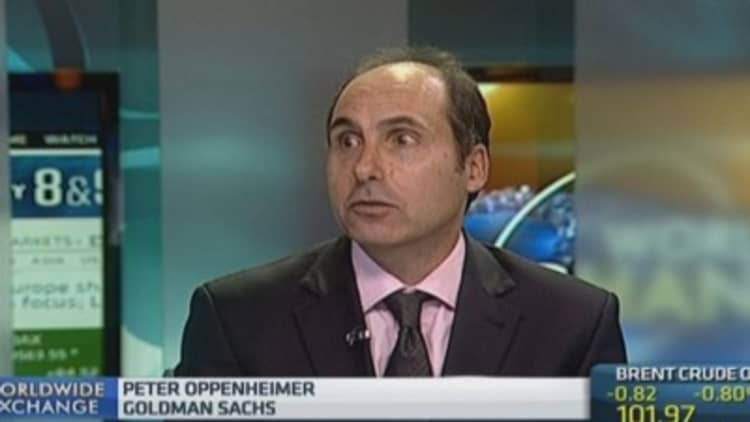
The euro's drop to its lowest against the U.S. dollar in almost two years on Thursday may be just the beginning, with some analysts expecting the common currency to fall to levels not seen since 2003.
"The euro is vulnerable to a serious hit," analysts at Barclays said in a note Wednesday. "We now expect a large, multi-year downtrend in the euro, following a substantial deterioration in the euro area's economic outlook and the ECB's (European Central Bank) aggressive response to that deterioration."
Read More Italy's Padoan would welcome lower euro
The euro slipped to a 22-month low of $1.2737 on Thursday after ECB President Mario Draghi said in a newspaper interview that he expects the euro zone to grow modestly in the second half of the year, helped by the ECB's recent stimulus steps. He also pledged to do more to help the single currency region should it become necessary.
It comes after Draghi on Monday told the European Parliament that the central bank may use unconventional tools to spur inflation and growth, which could include quantitative easing, or buying credit and sovereign bonds. Draghi reiterated those views in an interview published Thursday by Lithuanian business daily Verslo Zinios ahead of a speech at the country's central bank.
Read More With ECB in focus, euro downtrend looks strong
Also weighing on the common currency, fresh data from the region's economic powerhouse Germany showed business sentiment fell in September to its lowest level since April of last year.
Barclays cut its 12-month forecast for the euro to $1.10 from $1.25, with much of the depreciation expected within six months.
Others are equally bearish.
Read More Commentary: Draghi remarks are honey for euro bears
"The main drivers of euro trends point to significant weakness," Societe Generale said in a note earlier this week. "Draghi will succeed in weakening the euro now because in the coming months the contrast between euro area and U.S. economic performance will translate into monetary policy divergence as the ECB remains accommodative but the Federal Reserve first stops buying assets and then raises rates from mid-2015 onwards."

Read MoreFed could toughen policy stance as ECB takes easy money baton
It tips the euro will fetch just $1.17 by the end of 2016 on a simple fair value model, based on what it views as conservative assumptions that the VIX remains tight, the spread between Spanish government debt and bunds doesn't move and the spread between two-year euro and U.S. swap rates widens as the U.S. Federal Reserve raises its benchmark rate to 2.5 percent.
But the euro's fair value could fall below $1.10 if those factors come in slightly less conservative, Societe Generale said.
—By CNBC.Com's Leslie Shaffer; Follow her on Twitter @LeslieShaffer1

